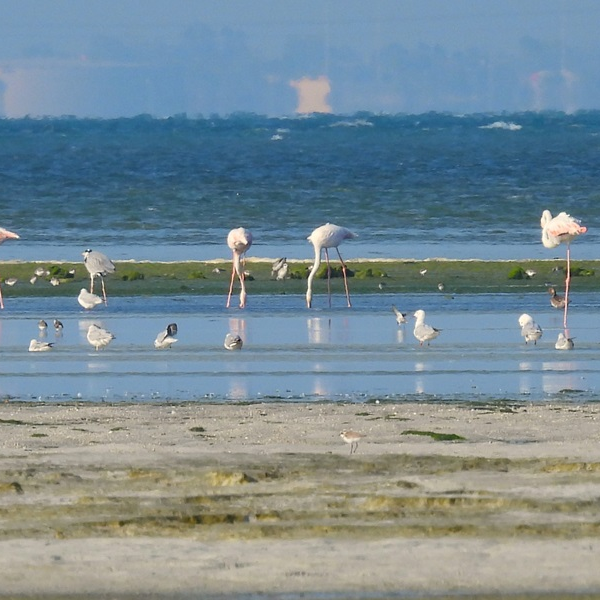Mangrove restoration in Saudi Arabia

Mangrove restoration in Saudi Arabia
Saudi Arabia wants to create a mangrove forest which, at 4,000 hectares, will be the largest in the Persian Gulf. Land reclamation has led to many mangroves being lost over the years. But these plants provide numerous services to the ecosystem, such as capturing CO2 and purifying water. They also serve as breeding and feeding grounds for local fauna. In Tarout Bay, Witteveen+Bos investigated the best methods and locations for planting new mangroves. We also created a spatial design for an associated park and a draft design for a visitor centre within this park.
The Saudi Development Authority, operating on behalf of the national government, assigned local engineering firm Euro Group to develop the mangrove forest and park. As a subcontractor, Witteveen+Bos was responsible for creating a restoration and management plan for the forest, investigating international accreditation, contributing to the visitor experience, and creating draft designs for the park.
Water depth crucial
In the restoration plan, our experts examined which sites – under which conditions – were most suitable for a mangrove forest. This involved looking at the overall ecosystem of which the mangroves would form a part, and assessing the feasibility of the 4,000-hectare target. The main factor in identifying suitable sites was water depth. A low water level, combined with nutrient supply from tides, is necessary for an environment conducive to mangrove growth.

Sustainable approach
Our ultimate recommendation was to take a phased approach to the mangrove forest’s growth, having it primarily grow from within the existing ecosystem. This is the most sustainable method. One way to achieve this is to strip the existing top layers, which are extremely hard and saline, to give newly planted mangroves the best chance of survival. Some sites, however, are too deep. At these locations, additional sedimentation can create the right conditions for mangrove growth.

Management and maintenance key
Effective management and maintenance of the mangrove area are key to the project’s success. Past studies in the region have shown that only around 20 % of new seedlings survive. The dry climate and relatively salty sea water provide harsh living conditions that only the grey mangrove (Avicennia marina) can survive. Among other things, this means that a larger amount of seedlings must be readily available. The development of planted seedlings also needs to be closely monitored, as do the (a)biotic parameters that affect their growth.

Visitor experience
The plans for the mangrove forest and park include creating a visitor centre and opening part of the park for recreation and education. Using various types of fictitious visitors, our experts developed a concept for the visitor experience.
We put ourselves in the shoes of ecotourists, sporty outdoor types, and families with young children. This led to design requirements based on the interests and expected behaviour of these groups. It raised questions such as: How will visitors travel to the site? Where will their visit begin? What route will they follow? How will they end their visit? And what activities will they undertake along the way?

Towards an implementation plan
The final product we delivered consisted of proposed planting plans and preliminary designs for the route through the park and for the visitor centre. The main contractor will further develop these into an implementation plan that gives the mangrove forests of the past a chance to again take root in this part of the Middle East in the foreseeable future.

More information?
